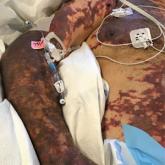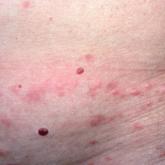Article

Purpura Fulminans in an Asplenic Intravenous Drug User
- Author:
- Emily S. Nyers, MD
- Rachael H. Kappius, MD
- Laura S. Winterfield, MD
- Dirk M. Elston, MD
In patients with severe purpura fulminans and a gangrenous limb, it is important to allow adequate time for demarcation of gangrene and not rush...
Article

What’s Eating You? Human Body Lice (Pediculus humanus corporis)
- Author:
- Emily S. Nyers, MD
- Dirk M. Elston, MD
Compared to head and pubic lice, body lice carry increased morbidity in the form of greater body surface area involvement, possible infectious...
